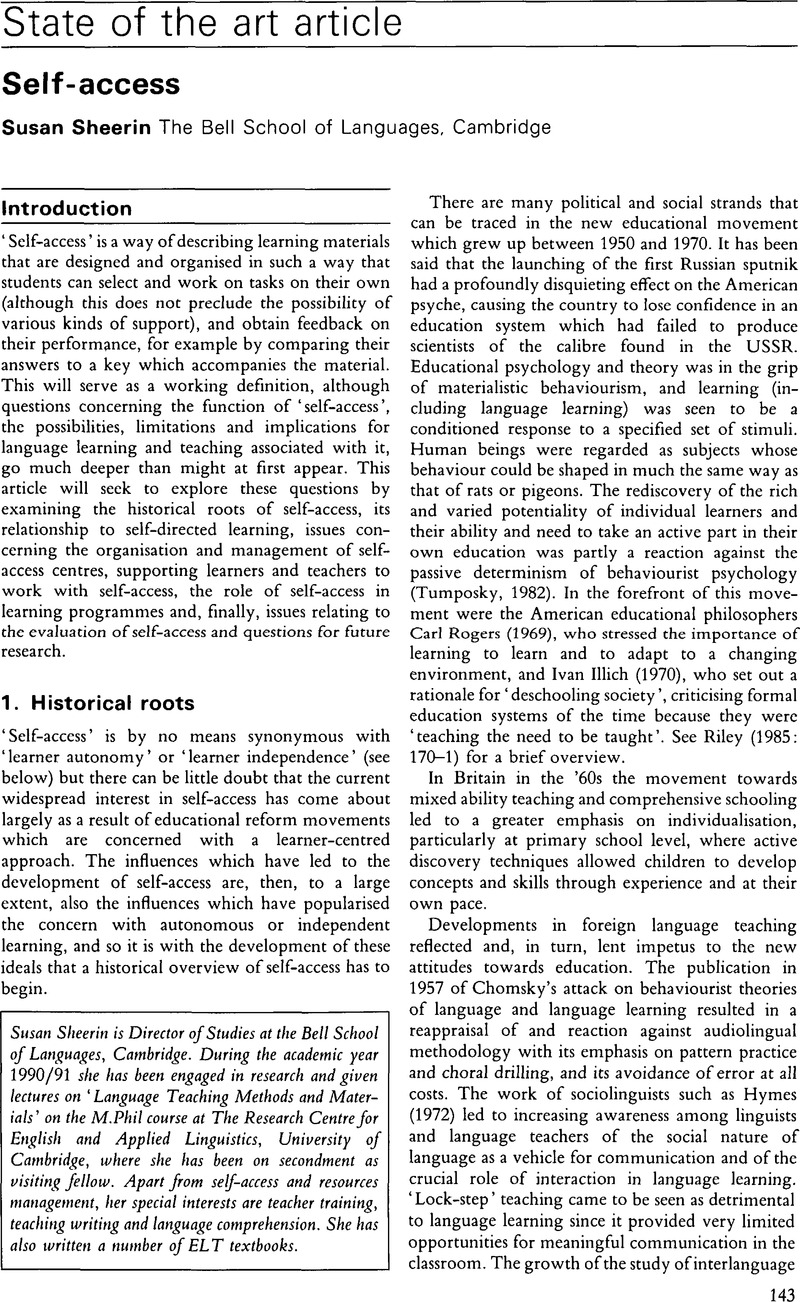Crossref Citations
This article has been cited by the following publications. This list is generated based on data provided by Crossref.
White, Ron V.
1992.
Innovation in Curriculum Planning and Program Development.
Annual Review of Applied Linguistics,
Vol. 13,
Issue. ,
p.
244.
Cumming, James
and
Storer, Graeme
1992.
Language training in development: New strategies and roles.
System,
Vol. 20,
Issue. 4,
p.
507.
Barnett, Lew
1993.
Teacher off: Computer technology, guidance and self-access.
System,
Vol. 21,
Issue. 3,
p.
295.
Mar-Molinero, Clare
1993.
Modern languages open learning in higher education.
The Language Learning Journal,
Vol. 8,
Issue. 1,
p.
44.
Piper, Alison
1994.
Ecología:The assumptions, expectations and strategies of modern languages students working in a self‐access learning environment for the first time.
Language Awareness,
Vol. 3,
Issue. 1,
p.
11.
Lee, Winnie
and
Morrison, Bruce
1998.
A Role for Newspaper Articles in Developing Autonomous Language Learning Skills.
RELC Journal,
Vol. 29,
Issue. 2,
p.
90.
Detaramani, Champa
and
Shuk Im Chan, Irene
1999.
Learners' Needs, Attitudes and Motivation Towards the Self-Access Mode of Language Learning.
RELC Journal,
Vol. 30,
Issue. 1,
p.
124.
Morrison, Bruce
2005.
Evaluating learning gain in a self-access language learning centre.
Language Teaching Research,
Vol. 9,
Issue. 3,
p.
267.
Bown, Jennifer
2006.
Locus of Learning and Affective Strategy Use: Two Factors Affecting Success in Self-Instructed Language Learning.
Foreign Language Annals,
Vol. 39,
Issue. 4,
p.
640.
Silva, Kleber Aparecido da
Bartholomeu, Maria Amélia Nader
and
Claus, Maristela M. Kondo
2007.
Auto-avaliação: uma alternativa contemporânea do processo avaliativo.
Revista Brasileira de Linguística Aplicada,
Vol. 7,
Issue. 1,
p.
89.
Morrison, Bruce
2008.
The role of the self-access centre in the tertiary language learning process.
System,
Vol. 36,
Issue. 2,
p.
123.
Tian, Xianzhi
2009.
The Construction of Autonomous-resource Systems in “Zero-approach” Teaching Mode Based on Web.
p.
192.
Kim, Bong-Gyu
2013.
A study of self-directed English learning strategies of university students for the reinforcement of practical English language skills.
Multimedia-Assisted Language Learning,
Vol. 16,
Issue. 3,
p.
69.
Jung Tae Kim
이용주
and
Young Woo Cho
2014.
Exploring the Effects of Multimedia-based Self-directed English Speaking Practice.
Multimedia-Assisted Language Learning,
Vol. 17,
Issue. 4,
p.
61.
Msimeer, Amel
2015.
A self-access learning facility in a Libyan University.
(Faculty of Arts Journal) مجلة كلية الآداب - جامعة مصراتة,
p.
44.
Ozcelik, Hatice Nur
Van den Branden, Kris
and
Van Steendam, Elke
2020.
Alleviating Effects of Self-Regulating the Audio on Listening Comprehension Problems.
International Journal of Listening,
p.
1.
Salehi, Hadi
and
Farajnezhad, Zahra
2020.
Socio-Cultural Interferences in Promoting Learner’s Autonomy in Iranian EFL Learners: English Language Teachers’ Attitudes.
SSRN Electronic Journal ,
Chateau, Anne
and
Tassinari, Maria Giovanna
2021.
Autonomy in language centres: myth or reality?.
Language Learning in Higher Education,
Vol. 11,
Issue. 1,
p.
51.





